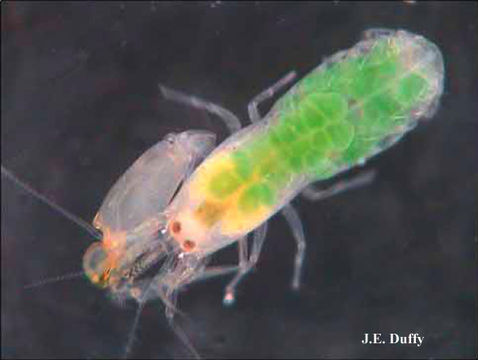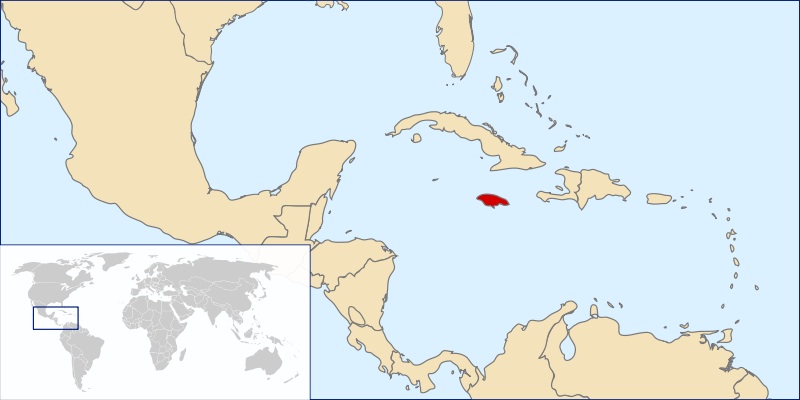[Part 1 in the SeaMonster Expedition series: Jamaica. the team finalizes preparations for a 10-day research trip to Jamaica to solve the mystery of large, cooperative societies in lowly shrimp.]
As ice skins over Timberneck Creek among the bare trees of Virginia, we are eagerly staging gear and making preparations for our first expedition of the year, to Jamaica. This trip commences a new chapter in our long-term research on the evolutionary history and unique ecology of Caribbean sponge-dwelling shrimp. Three of our five-member party — Kristin, James, and Solomon — depart at 0-dark-thirty tomorrow morning, joining up at the layover in Philadelphia for the flight together to Montego Bay, and thence the coach (as buses are called in that neck of the woods) to Discovery Bay. Dustin and I will join them Friday.
Standing amid the motley piles of cable ties, sample vials, forceps, microscopes and cameras, dive gear pulled out for the first time since late summer, and cramming it into action packers and duffel bags, the scene and smells and routine send me back: It’s hard to believe (and harder to admit in the very youthful blogosphere) that it was more than two decades ago when I first stumbled across the inconspicuous little shrimps holed up inside sponges as a grad student in Panama. Little did I dream at that time that sponge shrimp would gradually become an obsession that would occupy the better part of my scientific career. What a long strange trip it’s been. And I ain’t done yet.
 Spending the best years of one’s life rooting around for submicroscopic shrimp (and they have been great years indeed, but that’s a story for another day) may sound eccentric, to put it politely. Therefore: a few words of explanation. Snapping shrimps in the genus Synalpheus are one of those wildly diverse groups of organisms that make coral reefs so irresistably mesmerizing and at the same time such a puzzle scientifically — how can there be so many species? What are they doing? Could it possibly be that a Jamaican reef really “needs” 25 or 30 species of Synalpheus, looking superficially nearly identical and to all appearances doing more or less exactly the same thing, all together on the same reef? How have they managed to coexist, often shoulder to shoulder in the tight Swiss-cheese-like canals of their host sponges, for the last few million years without driving each other crazy and eventually extinct? Why, even more generally, should there be 500 species (very roughly) of alpheid shrimp worldwide rather than, say, 5? Or on the other hand 50,000?
Spending the best years of one’s life rooting around for submicroscopic shrimp (and they have been great years indeed, but that’s a story for another day) may sound eccentric, to put it politely. Therefore: a few words of explanation. Snapping shrimps in the genus Synalpheus are one of those wildly diverse groups of organisms that make coral reefs so irresistably mesmerizing and at the same time such a puzzle scientifically — how can there be so many species? What are they doing? Could it possibly be that a Jamaican reef really “needs” 25 or 30 species of Synalpheus, looking superficially nearly identical and to all appearances doing more or less exactly the same thing, all together on the same reef? How have they managed to coexist, often shoulder to shoulder in the tight Swiss-cheese-like canals of their host sponges, for the last few million years without driving each other crazy and eventually extinct? Why, even more generally, should there be 500 species (very roughly) of alpheid shrimp worldwide rather than, say, 5? Or on the other hand 50,000?
Such questions are the heart of the fundamental, even cosmic, puzzle of natural history: they are in fact the central problem of biodiversity. And once you start sniffing around they begin to lead to other fundamental questions: How did these creatures get here? Why are some species big and other, related species small? Why do some species live in several kinds of sponges whereas others are supremely picky, occupying only one type of sponge wherever they’re found? Pondering such questions (I like to think) puts one in the rarified company of Darwin, Ernst Mayr, GE Hutchinson, Robert MacArthur, and a long line of explorers of reefs and jungles and ideas. You can address the questions by studying birds — as Darwin and Mayr and MacArthur did — or plankton and diving beetles — as Hutchinson did — or bacteria or plants or pretty much any group you like. I chose an obscure and taxonomically difficult group of tropical shrimp. Mainly because to study them I had to go diving in warm, beautiful places where they make good rum.
In other words, searching for solutions to the Great Questions transcends the deceptive obscurity of hunting for tiny invertebrates that few civilians have ever even seen. Sponge-dwelling shrimp became for me a microcosm of the Big Questions in ecology and evolution, providing a window through which to view and interpret those questions and — if I’m lucky — ifnd some answers.
But . . . that’s not the real answer. Sure, I want to solve the great mysteries of Nature as much as the next guy. But if the truth be told, what really pulls me in again and again, year after year, what makes all the manuscript reviews and the brain-deadening committee meetings and debugging R code and having to wear a tie sometimes — what makes all of that worthwhile is the deeply, almost spiritually absorbing practice of natural history — the focused study of living organisms, in their natural habitats, doing the often puzzling, sometimes bizarre, sometimes astonishing things they do. Underwater, down in the colorful chaos of the reef, surrounded by schools of fish, never knowing what might turn up. Always, even in a familiar place, on the threshold of a new world. Learning what I can call, with no irony, the meaning of life.
That’s what I thought about, stuffing nylon shorts into my duffel bag. Well, maybe not in those precise words. What a lucky man I am — I get paid for doing this. And so the countdown begins.

Leave a Reply